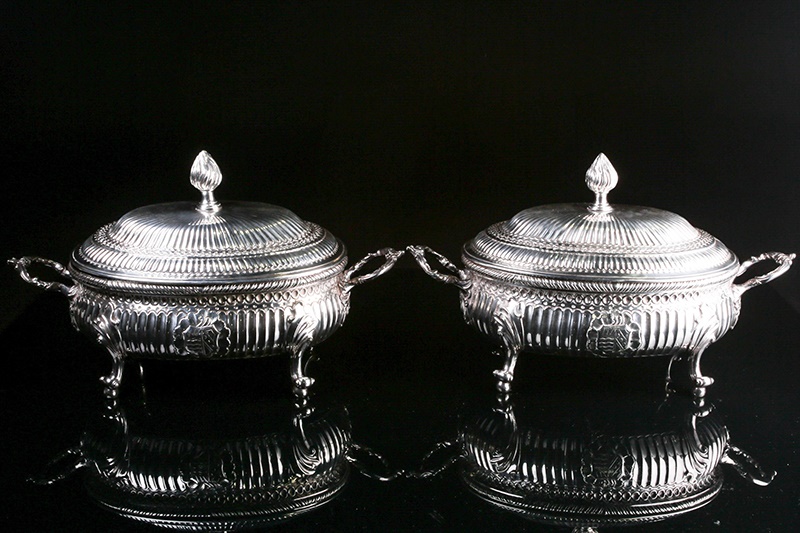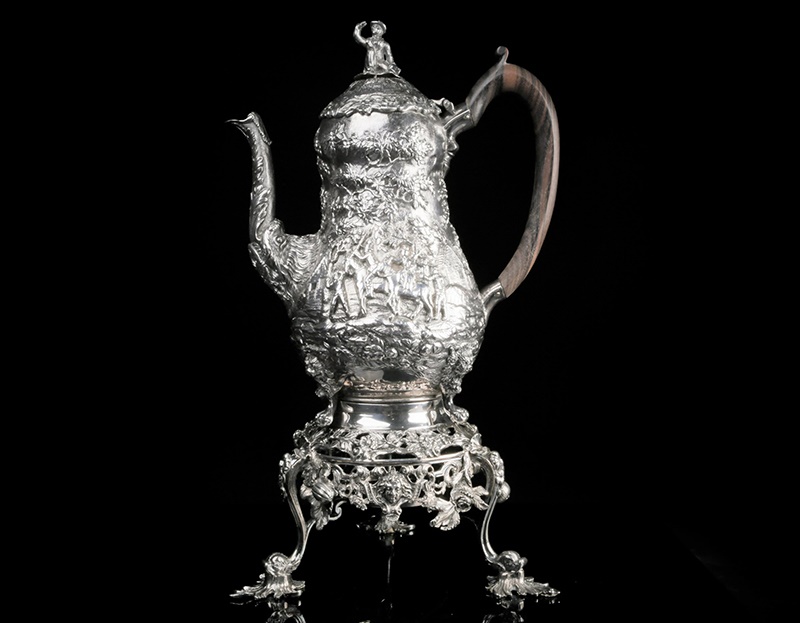Is There a Market for Antique Silver?
Antique silver continues to captivate the attention of discerning buyers
15/08/2024
The UK has long been distinguished for its rich history and cultural heritage, which is reflected in the vibrant antique silver market. As a hub for collectors and enthusiasts, the demand for exquisite antique silver pieces remains strong, offering a unique investment opportunity.
Silver was first mined around 5-7BC, initially used for coinage it emerged into decorative and functional objects in the 15th century. During the reign of Louis XIV silver manufacturing gained momentum spreading across Europe to the UK, where it reached the height of popularity in the 18th and 19th centuries. It was used for everything from cutlery services, trophies, vases, picture frames and candelabras to cigarette cases, jewellery, and purses. Even though society has become far less formal when it comes to entertaining, the opportunity to own objects from a bygone era, while imagining the hands that once polished its gleaming surface, remains enduringly enchanting amongst enthusiasts.
A set of three early George III silver tea caddies
With timeless elegance and intricate craftsmanship, antique silver continues to captivate the attention of discerning buyers. The market showcases a diverse array of silver items that appeal to a wide range of collectors. There are enthusiasts that only collect certain objects such as teapots, candlesticks, or miniatures, while others collect according to maker, age, or style. Whilst antique silver can be solid or plated, it is worth noting that the silver content will play a significant role in the value… Solid silver remains highly collectible, whereas only certain rare and desirable types of silver-plated wares hold any significant value.
A pair of mid 18th century Irish silver soup tureens and covers
As a precious metal, silver holds an intrinsic value; considered alongside factors such as age, maker, rarity, provenance, and condition, this information plays a crucial role in determining the value of antique silver pieces. Collectors often seek out items with a storied past, enjoying the thrill of tracing their origins to renowned silversmiths or prestigious families. The market's resilience is a testament to the enduring allure of these historical treasures.
It is important to also note that the condition of silver objects can notably influence their desirability and value. Items that have been restored or had inscriptions removed may no longer be as collectible as they would have been in their original state. We would always recommend that you consult with a trusted expert in the field before commissioning any restorative work.
A George IV fine silver coffee pot on conforming stand
Whether you're an experienced collector or a newcomer to the world of antique silver, the market for these precious relics continues to thrive, driven by a deep-seated passion that transcends mere material value. There is a wealth of opportunities to discover and acquire exceptional pieces, ranging vastly in affordability, that can serve as both functional and decorative elements in your home or collection. From renowned international auction houses, such as Dawsons, to specialised dealers, the journey of discovery is one that promises to be both rewarding and enriching.
read more
Where to Sell the Family Silver
How Do I Identify Antique Silver?
How to Tell if Antique Silver is Real

Nicky Houston
Our Head of Jewellery, Watches & Silver... Nicky is a highly respected Auctioneer & Valuer, who had dreams of becoming an artist. Whilst she may not have made it as a successful artist herself, Nicky has helped many a customer to successfully sell and buy beautiful pieces of jewellery and works of art over her many years working within the auction industry.
Jewellery Silver & Objects of Virtue Watches
Are you considering parting with any Antique silver?
With a global audience of over 10 million known bidders, Dawsons can secure the highest prices for you.
Get in touch with an expert Valuer for confidential sales advice, we would be delighted to help:


